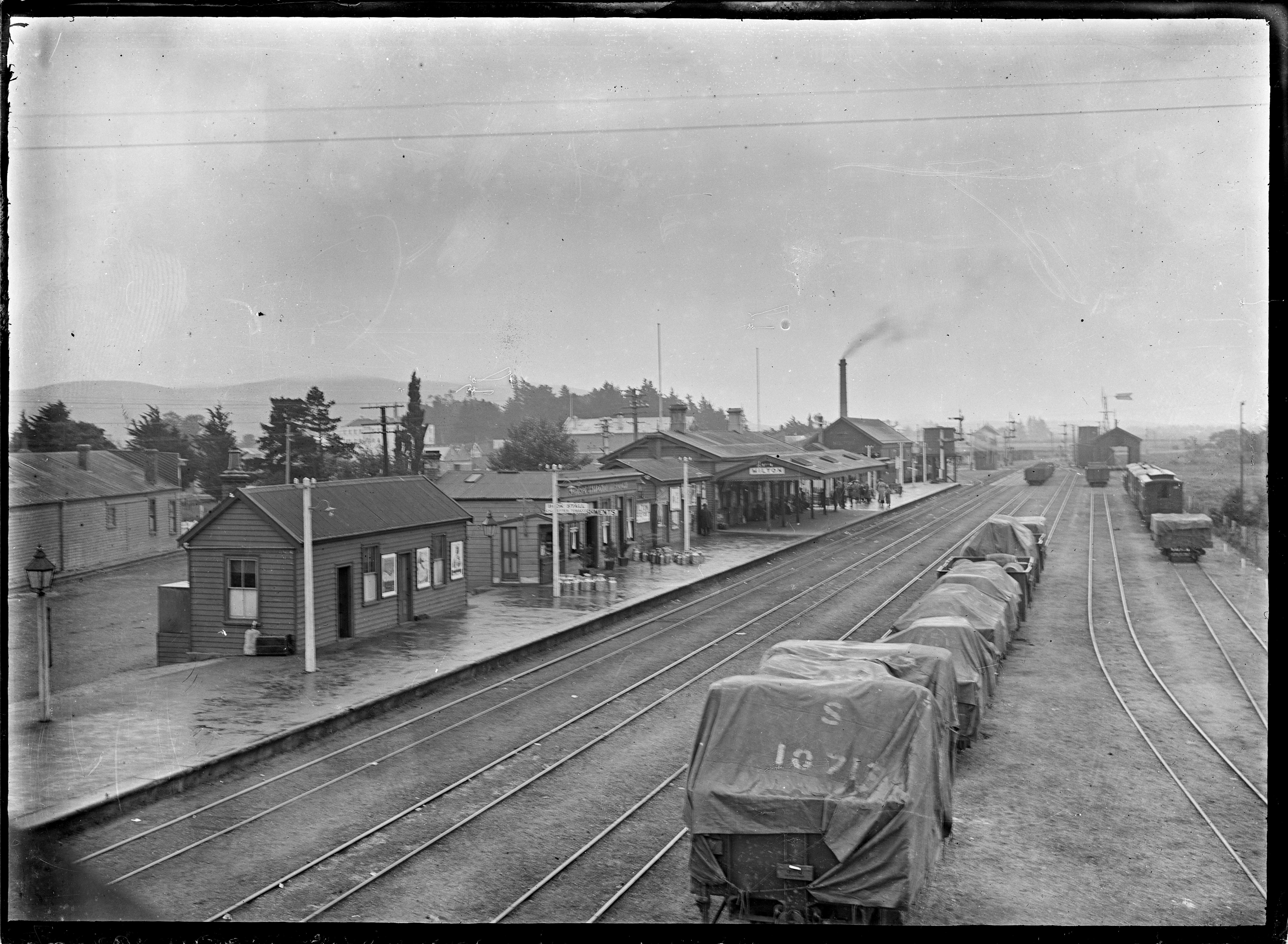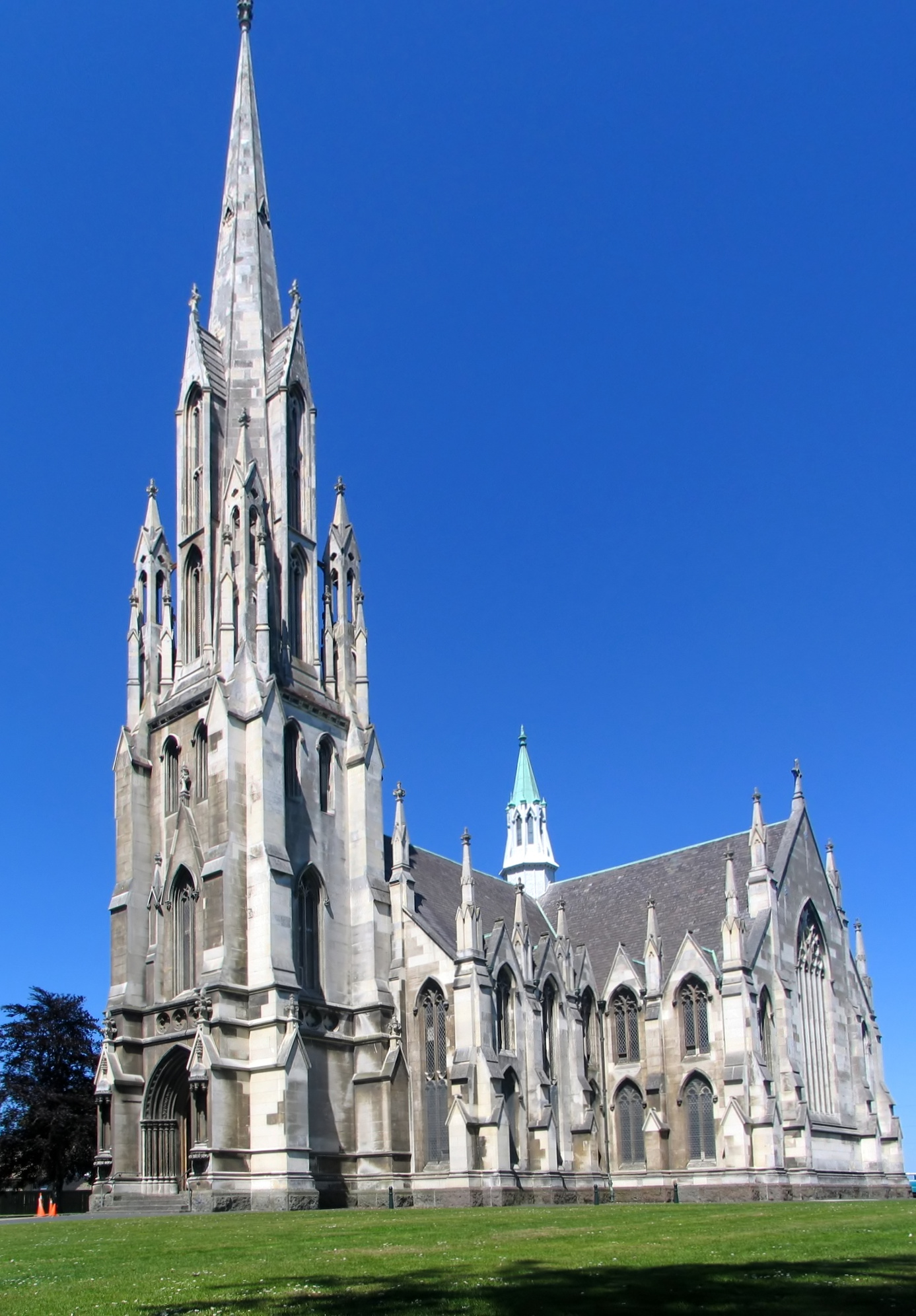|
Milton, New Zealand
Milton, formerly known as Tokomairiro or Tokomairaro, is a town of over 2,000 people, located on New Zealand State Highway 1, State Highway 1, 50 kilometres to the south of Dunedin in Otago, New Zealand. It lies on the floodplain of the Tokomairaro River (until 2016 called the ''Tokomairiro''), one branch of which loops past the north and south ends of the town. This river gives its name to many local features, notably the town's only secondary school, Tokomairiro High School. Founded as a milling town in the 1850s, there has long been dispute as to the naming of the settlement. The town's streets are named for prominent British poets, and it is possible that the town's original intended name of Milltown became shortened by association with the John Milton, poet of the same name. It is equally possible, however, that the name Milton inspired the choice of poets' names for the streets. History Milton's early history was strongly affected by the Otago gold rush, discovery of gold ... [...More Info...] [...Related Items...] OR: [Wikipedia] [Google] [Baidu] |
Regions Of New Zealand
New Zealand is divided into sixteen regions for local government in New Zealand, local government purposes. Eleven are administered by regional councils, and five are administered by Unitary authority#New Zealand, unitary authorities, which are territorial authorities of New Zealand, territorial authorities that also perform the functions of regional councils. Although technically a district but classed as a territory, The Chatham Islands Territory is outside the regions and is administered by the Chatham Islands Council, which is similar to a unitary authority, authorised under its own legislation. Current regions History and statutory basis The regional councils are listed in Part 1 of Schedule 2 of the Local Government Act 2002, along with reference to the ''New Zealand Gazette, Gazette'' notices that established them in 1989. The act requires regional councils to promote sustainable developmentthe social, economic, environmental and cultural well-being of their communitie ... [...More Info...] [...Related Items...] OR: [Wikipedia] [Google] [Baidu] |
Gabriel Read
Thomas Gabriel Read (21 August 182531 October 1894) was a gold prospector and farmer. His discovery of gold in Gabriel's Gully triggered the first major gold rush in New Zealand. Life Read was born on 21 August 1825 in Van Diemen's Land. The eldest of ten children, his father was businessman and banker George Frederick Read and his mother, Margaret Terry, was the daughter of a miller and the senior Read's second wife. After working on the goldfields of California and Victoria in the 1850s, Read travelled to Otago, New Zealand, on board the ''Don Pedro II'', having heard rumours in September 1860 of gold being found in Mataura, Southland. He arrived in Otago in February 1861. On 25 May 1861, he discovered gold close to the banks of the Tuapeka River in Otago, at Gabriel's Gully, which is named after him. Read wrote to Otago Superintendent John Richardson on 4 June to confirm the discovery, which led to the Otago gold rush. The Otago Provincial Council awarded Read £1000 ... [...More Info...] [...Related Items...] OR: [Wikipedia] [Google] [Baidu] |
Main South Line
The Main South Line, sometimes referred to as part of the South Island Main Trunk Railway, is a railway line that runs north and south from Lyttelton, New Zealand, Lyttelton in New Zealand through Christchurch and along the east coast of the South Island to Invercargill via Dunedin. It is one of the most important railway lines in New Zealand and was one of the first to be built, with construction commencing in the 1860s. At Christchurch, it connects with the Main North Line, New Zealand, Main North Line to Picton, New Zealand, Picton, the other part of the South Island Main Trunk. Construction Construction of the Main South Line falls into two main sections: from Christchurch through southern Canterbury, New Zealand, Canterbury to Otago's major city of Dunedin; and linking the southern centres of Dunedin and Invercargill, improving communication in southern Otago and large parts of Southland, New Zealand, Southland. Construction of the first section of the line began in 1865 ... [...More Info...] [...Related Items...] OR: [Wikipedia] [Google] [Baidu] |
Railway
Rail transport (also known as train transport) is a means of transport using wheeled vehicles running in railway track, tracks, which usually consist of two parallel steel railway track, rails. Rail transport is one of the two primary means of land transport, next to road transport. It is used for about 8% of passenger and rail freight transport, freight transport globally, thanks to its Energy efficiency in transport, energy efficiency and potentially high-speed rail, high speed.Rolling stock on rails generally encounters lower friction, frictional resistance than rubber-tyred road vehicles, allowing rail cars to be coupled into longer trains. Power is usually provided by Diesel locomotive, diesel or Electric locomotive, electric locomotives. While railway transport is capital intensity, capital-intensive and less flexible than road transport, it can carry heavy loads of passengers and cargo with greater energy efficiency and safety. Precursors of railways driven by human or an ... [...More Info...] [...Related Items...] OR: [Wikipedia] [Google] [Baidu] |
Milton Railway Station ATLIB 313102
Milton may refer to: Names * Milton (surname), a surname (and list of people with that surname) ** John Milton (1608–1674), English poet * Milton (given name) Places Australia * Milton, New South Wales * Milton, Queensland, a suburb of Brisbane ** Milton Courts, a tennis centre ** Milton House, Milton, a heritage-listed house ** Milton railway station, Brisbane ** Milton Reach, a reach of the Brisbane River ** Milton Road, an arterial road in Brisbane Canada * Milton, Newfoundland and Labrador * Milton, Nova Scotia in the Region of Queens Municipality * Milton, Ontario ** Milton line, a commuter train line ** Milton GO Station * Milton (federal electoral district), Ontario ** Milton (provincial electoral district), Ontario * Beaverton, Ontario a community in Durham Region and renamed as Beaverton in 1835 * Rural Municipality of Milton No. 292, Saskatchewan New Zealand * Milton, New Zealand United Kingdom England * Milton, Cambridgeshire, a village north of C ... [...More Info...] [...Related Items...] OR: [Wikipedia] [Google] [Baidu] |
Balclutha, New Zealand
Balclutha () is a town in South Otago, lying towards the end of the Clutha River, on the east coast of the South Island of New Zealand. It is about halfway between Dunedin and Gore, New Zealand, Gore on the Main South Line railway, New Zealand State Highway 1, State Highway 1 and the Southern Scenic Route. Balclutha has a population of (as of ), and is the largest town in South Otago. The Clutha District, Clutha District Council is based in Balclutha. The major service centre for the fertile farming region around the lower reaches of the Clutha River, it is also the nearest large town to the Catlins, a scenic region of native forest, wildlife, and rugged coastline. History Known locally as "Clutha", Balclutha's name – and that of the river on which it stands – reflects the Scotland, Scottish origin of the town's settlement. The name comes from Scottish Gaelic Baile Chluaidh (literally "Clyde Town", a poetic name for Dumbarton). James McNeil from Bonhill, Dunbartonshire, D ... [...More Info...] [...Related Items...] OR: [Wikipedia] [Google] [Baidu] |
Telephone
A telephone, colloquially referred to as a phone, is a telecommunications device that enables two or more users to conduct a conversation when they are too far apart to be easily heard directly. A telephone converts sound, typically and most efficiently the human voice, into electronic signals that are transmitted via Electrical cable, cables and other communication channels to another telephone which reproduces the sound to the receiving user. The term is derived from and (, ''voice''), together meaning ''distant voice''. In 1876, Alexander Graham Bell was the first to be granted a United States patent for a device that produced clearly intelligible replication of the human voice at a second device. This instrument was further developed by many others, and became rapidly indispensable in business, government, and in households. The essential elements of a telephone are a microphone (''transmitter'') to speak into and an earphone (''receiver'') which reproduces the voice a ... [...More Info...] [...Related Items...] OR: [Wikipedia] [Google] [Baidu] |
Terminating Vista
In urban design, a terminating vista is a building or an object such as a monument that stands within view in the Sightline (architecture), sightline or at the end or the middle of a road. Function Terminating vistas are considered an important method of adding aesthetic appeal to a city, and to emphasize important structures or monuments. Common terminating vistas include government buildings, war memorials, courthouses and other important structures. Standing at the end of a street adds grandeur to a structure, and legislature and palaces are thus often placed in such a locale. Also, especially on east–west streets, terminating vistas provide sunshade for pedestrians. A notable disadvantage of terminating vistas is that they make traffic more complicated and prevent a simple grid system of city blocks. To accommodate them, large traffic circles or other techniques have to be employed to manage traffic around the monument. Cities on a grid system such as New York City th ... [...More Info...] [...Related Items...] OR: [Wikipedia] [Google] [Baidu] |
Robert Lawson (architect)
Robert Arthur Lawson (1 January 1833 – 3 December 1902) was one of New Zealand's pre-eminent 19th century architecture, architects. The Dictionary of New Zealand Biography states that he did more than any other designer to shape the face of the Victorian era architecture of the city of Dunedin. He is the architect of over forty Church (building), churches, including Dunedin's First Church of Otago, First Church for which he is best remembered, but also other buildings, such as Larnach Castle, a country house, with which he is also associated. Born at Newburgh, Fife, Newburgh, in Fife, Scotland, he emigrated in 1854 to Australia and then in 1862 to New Zealand. He died aged 69 in Canterbury, New Zealand, Canterbury, New Zealand. Lawson is acclaimed for his work in both the Gothic revival and classical architecture, classical styles of architecture. He was prolific, and while isolated buildings remain in Scotland and Australia, it is in the Dunedin area that most surviving ... [...More Info...] [...Related Items...] OR: [Wikipedia] [Google] [Baidu] |
Tokomairiro Presbyterian Church
Tokomairiro Presbyterian Church is a church in the New Zealand town of Milton, in the Otago Region. It was designed and built by Robert Lawson and officially opened in 1889.Tokomairiro Church (Presbyterian) " ''''. Retrieved 2 March 2024. Presbyterianism was established in Milton early in the town's history, with the first service given by Rev. Dr Thomas Burns on Christmas Day 1851. A dedicated church was built and opened in 1863, at a time when Milton had rapidly grown as a staging post to the goldfields of the |
Gothic Architecture
Gothic architecture is an architectural style that was prevalent in Europe from the late 12th to the 16th century, during the High Middle Ages, High and Late Middle Ages, surviving into the 17th and 18th centuries in some areas. It evolved from Romanesque architecture and was succeeded by Renaissance architecture. It originated in the Île-de-France and Picardy regions of northern France. The style at the time was sometimes known as ''opus Francigenum'' (); the term ''Gothic'' was first applied contemptuously during the later Renaissance, by those ambitious to revive the Classical architecture, architecture of classical antiquity. The defining design element of Gothic architecture is the Pointed arch (architecture), pointed arch. The use of the pointed arch in turn led to the development of the pointed rib vault and flying buttresses, combined with elaborate tracery and stained glass windows. At the Abbey of Basilica of Saint-Denis, Saint-Denis, near Paris, the choir was rec ... [...More Info...] [...Related Items...] OR: [Wikipedia] [Google] [Baidu] |





